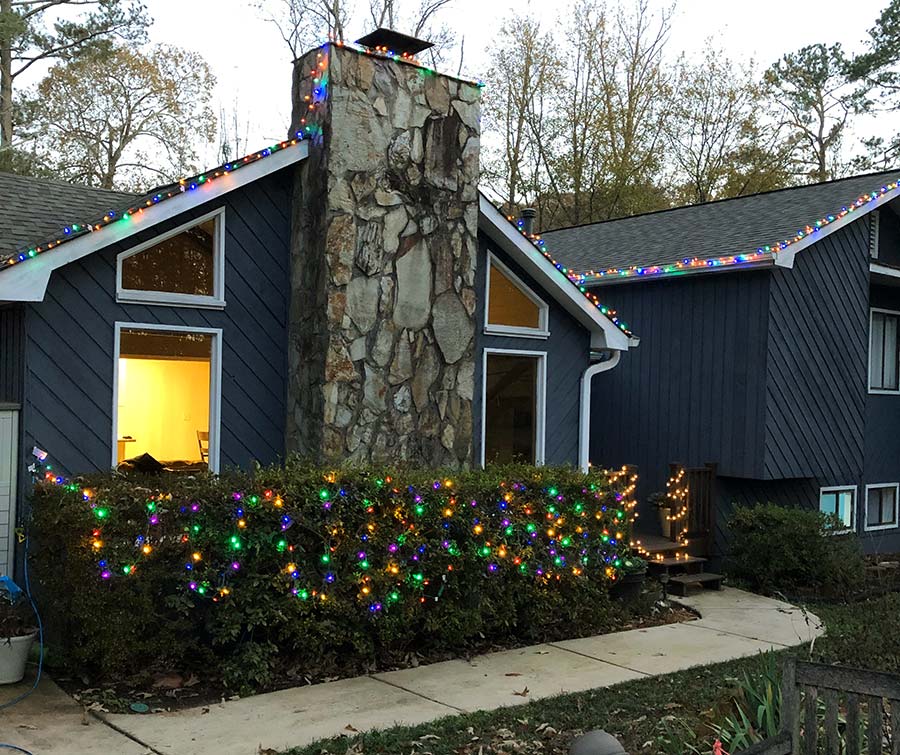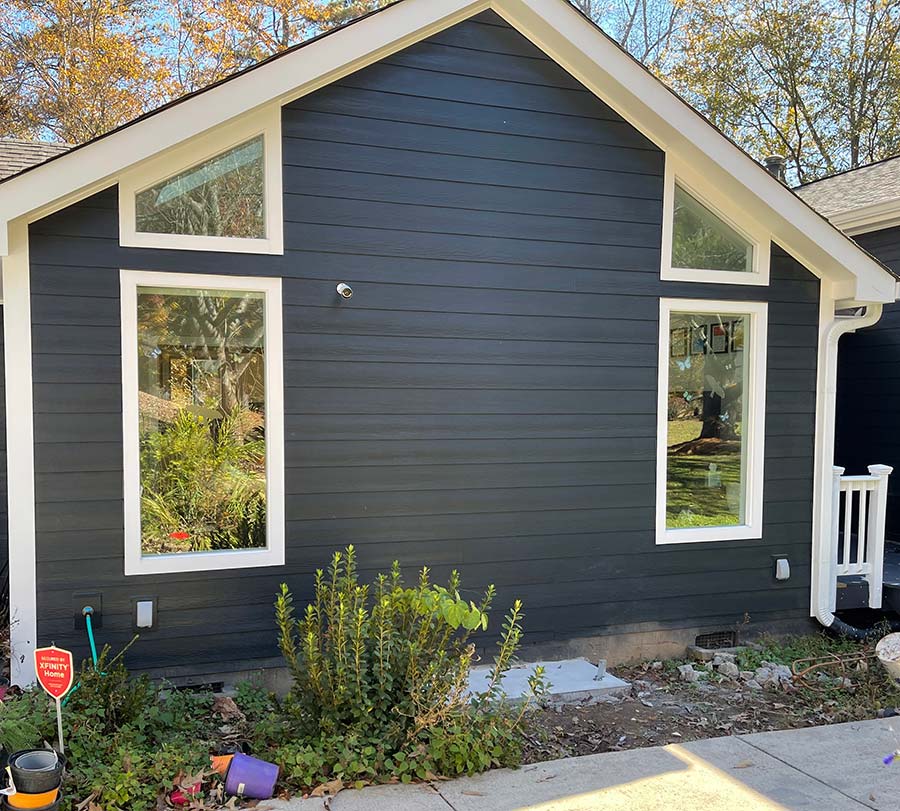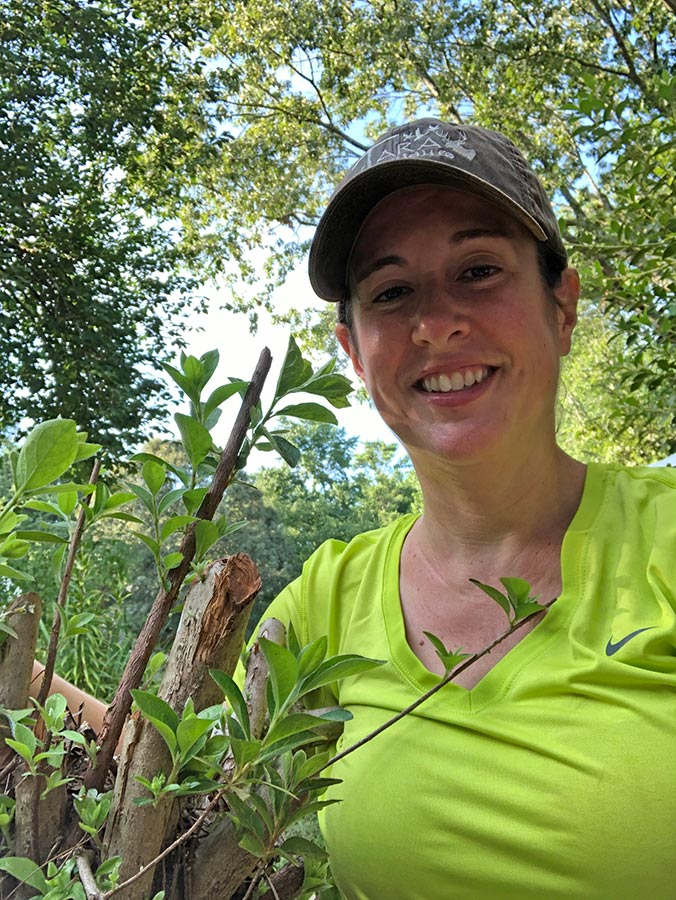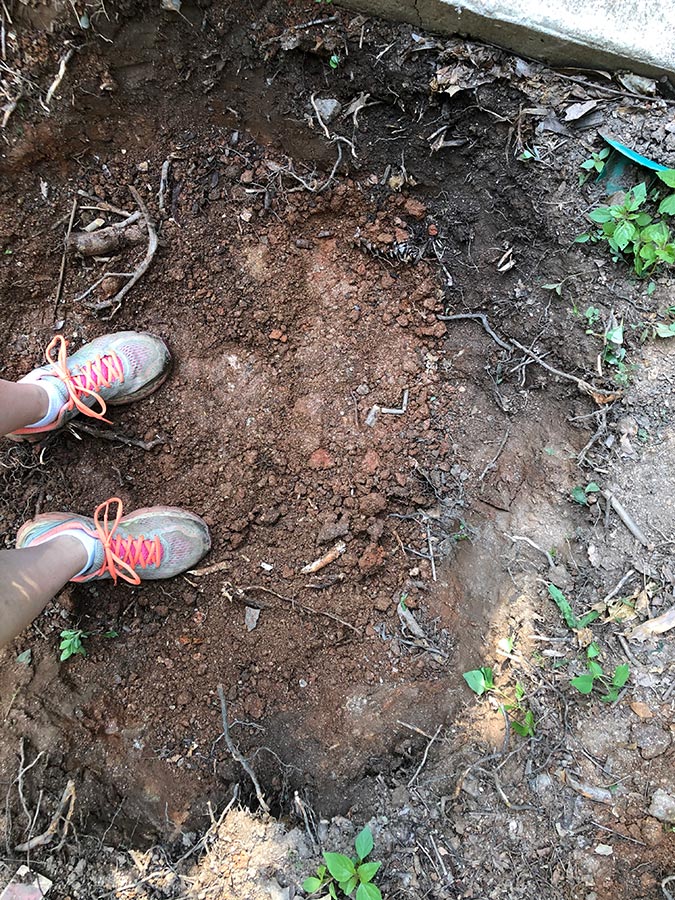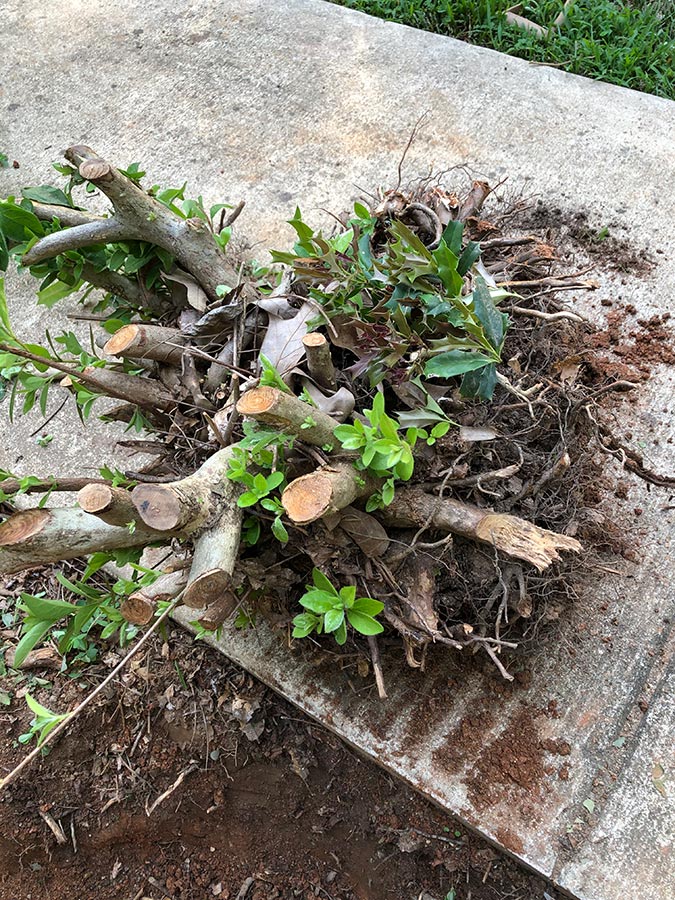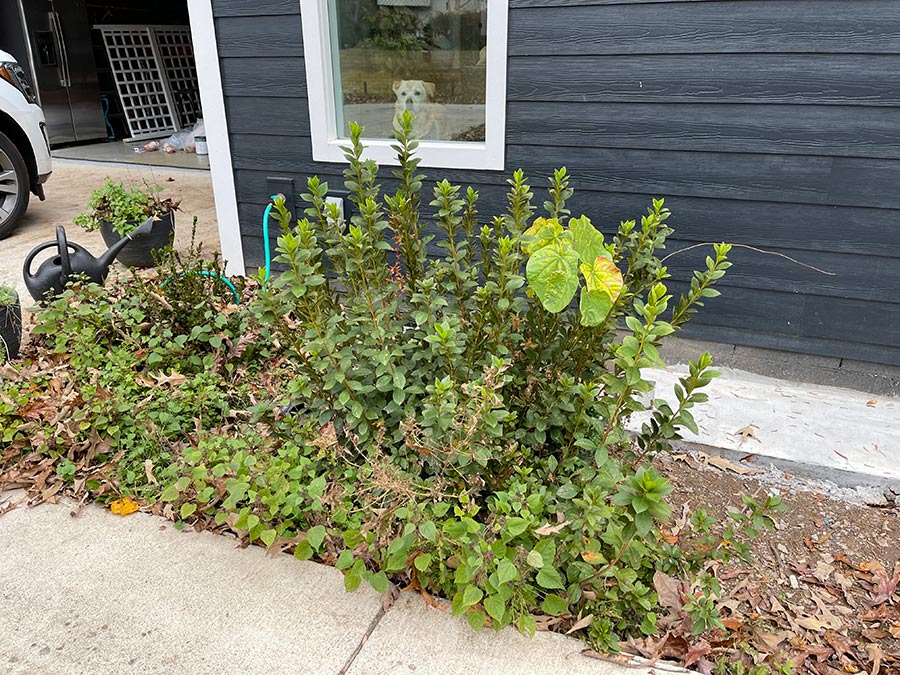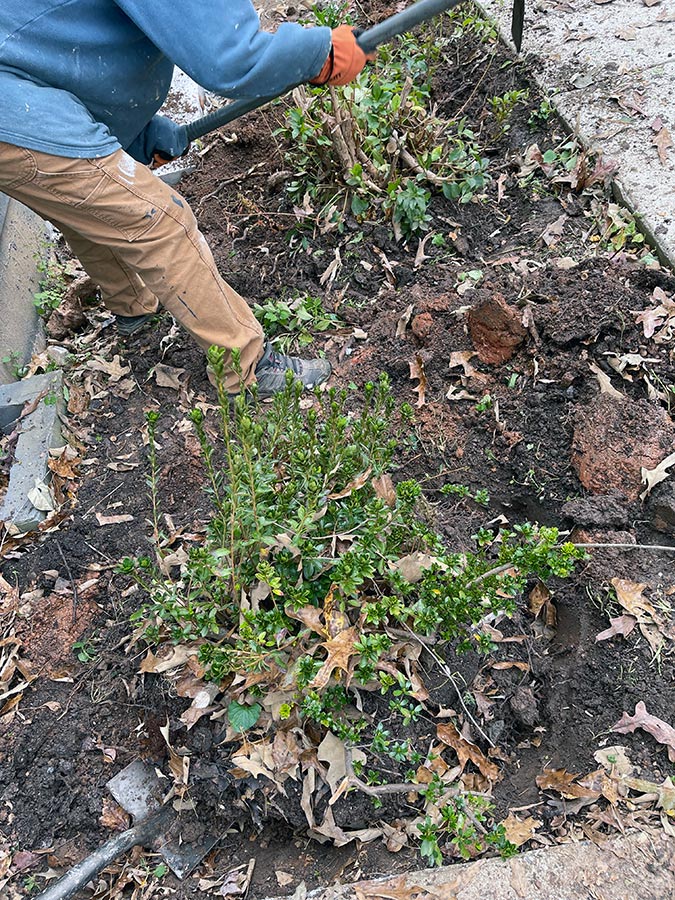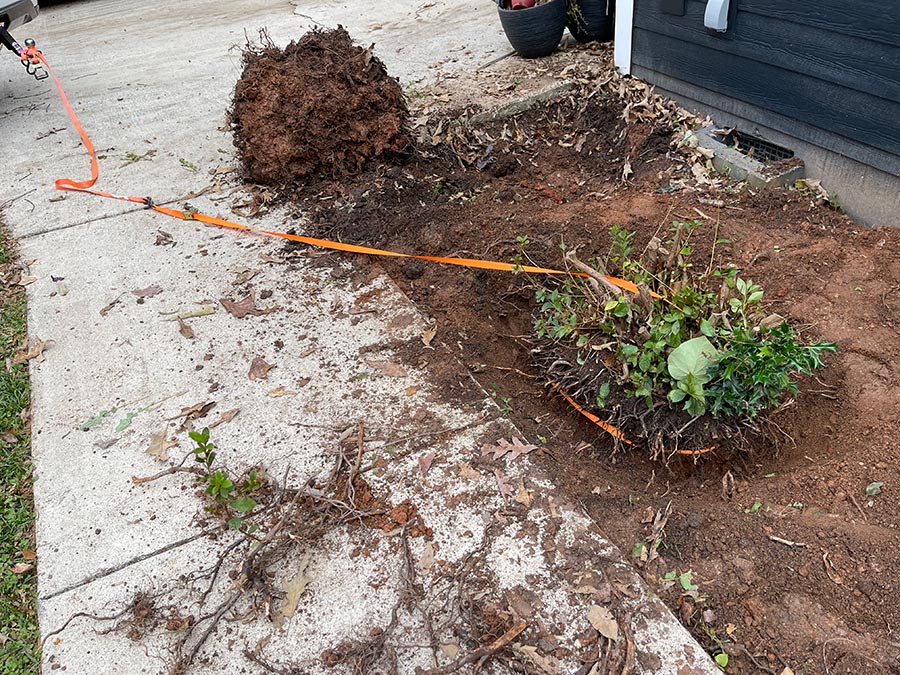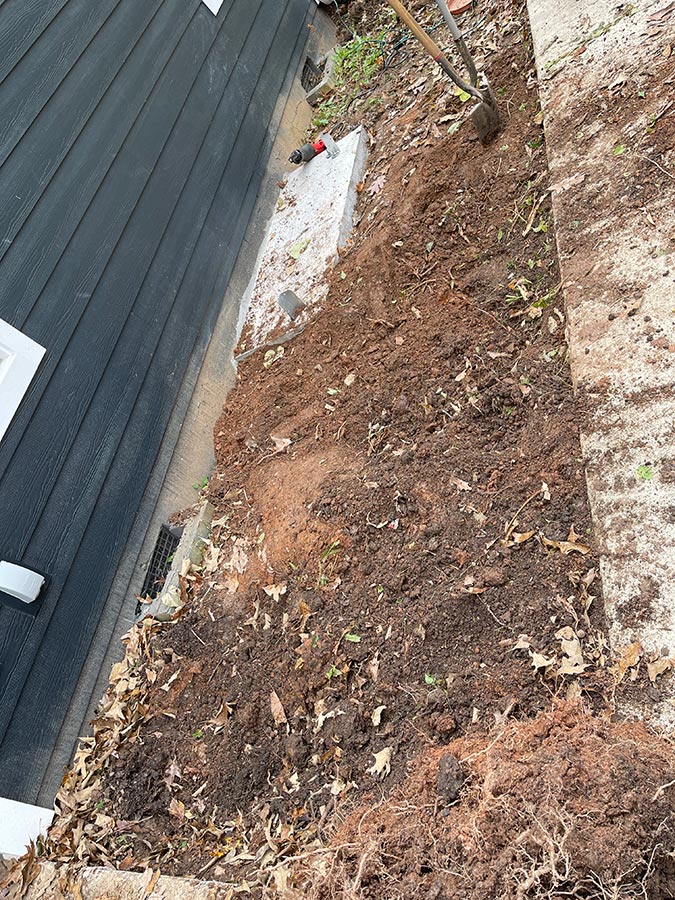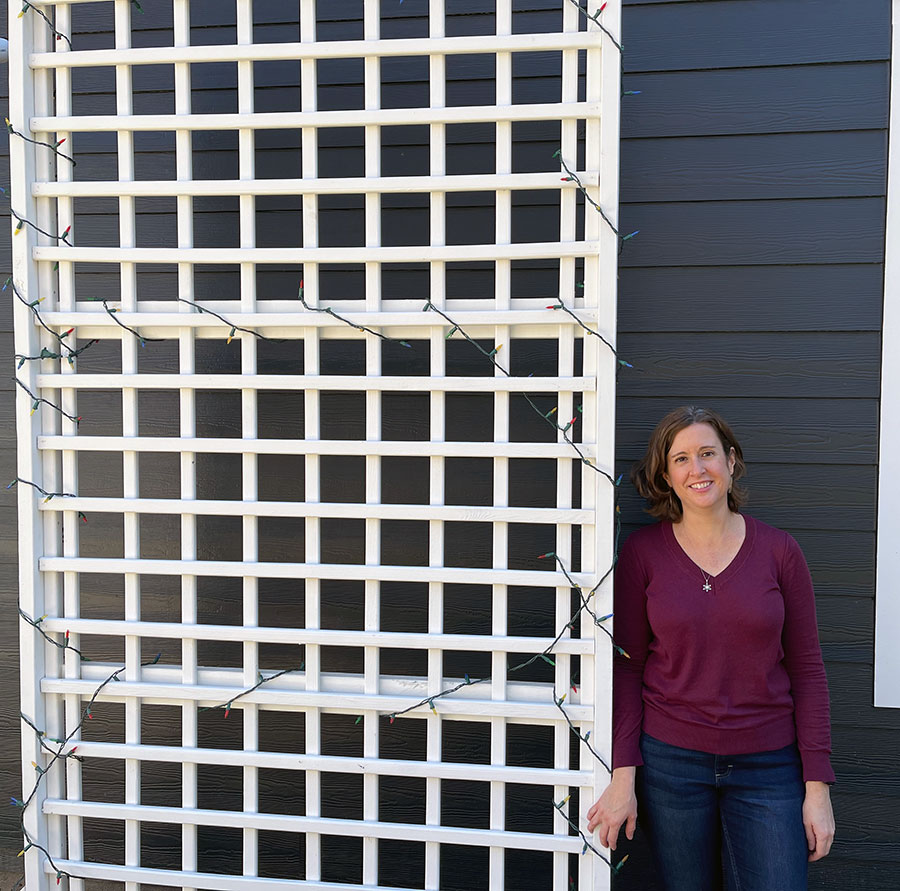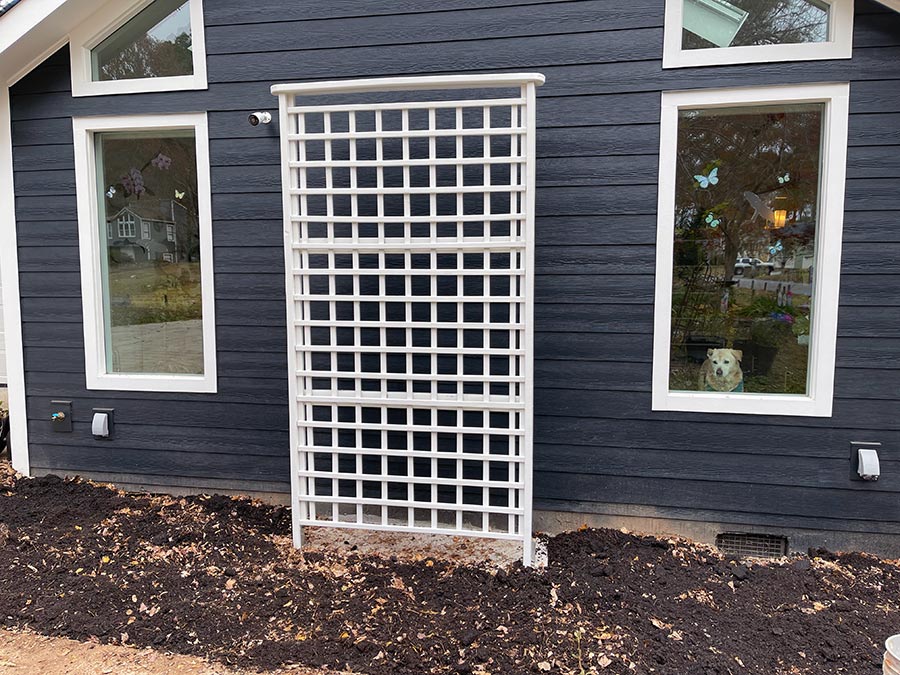2020 was the year for home renovations, wasn’t it? We had the siding replaced and removed a fireplace that we never used. And many of our neighbors had remodeling work done too.
We had to severely trim down the azaleas at the front of the house so that the contractors could reach the fireplace and the siding.
We made the decision to remove the bushes entirely and create a new design for this spot.
I was fine with removing these overgrown shrubs. I love native azaleas, but these were nonnative and had grown way too large for the space they were in. It was time for a change.

The Before Photo of the House 
The Chimney Coming Down 
The House After the Remodeling
Removing the Azaleas
It was hard work to remove the azaleas. I mean really hard work. But I did it.
I dug out the first azalea before the chimney was torn down. I spent a very long time digging under and around the large root ball and tossing dirt to the side.
Finally, I was able to just pull the azalea out – with brute force, of course.

Me with my trophy 
The deep and wide hole that I had to dig 
The azalea’s root ball (there’s some holly in there too)
Life got busy and I didn’t work on removing the other two azalea bushes. 2021 rolled around…..
My dear husband decided to try his hand at removing the remaining bushes so that we could start installing the trellis. But, he tried a different method to get the shrubs out of the ground.
He dug around the root ball as much as he could and then tied a strap around the shrub and hooked the strap up to his car.
I took a video of this. I was totally expecting a bloopers highlight reel. But, surprisingly, it worked and no one got injured and nothing was broken (yay!).

The two remaining azaleas that started to grow back (Look! There’s our dog Luna in the window) 
My husband digging a trench around them 
Rigging them up to the car 
The bed with no azaleas in it!
Building the Trellis
I wanted the trellis to be as tall as the windows on either side of it, so my husband built this custom 9-foot-tall trellis just for me. The kids even pitched in to help construct the trellis.
We stained it with the same color as the trim on the house and attached it to a concrete pad using bolts.
This Christmas, we even hung some lights on it.
It looks really good!

Me standing next to my new trellis 
The finished trellis with our two windows (and our dog Luna peeking out)
My Landscaping Plan
I drew this plan up over a year ago. I went with a purple and white color scheme (with a little maroon from the Rose campion and pale blue from the fescue in there too).
Although most of the plants in this garden plan are non-native, I want to be sure that there will be at least one native vine on the trellis.
For the native plant, I’ve decided on purple passionflower (Passiflora incarnata) for the trellis. Purple passionflower is a host plant for the gulf fritillary butterfly, so it’s important for me to include it in my yard.
I will pair this with a second vine (I haven’t decided yet) because I completely expect the gulf fritillary caterpillars to devour all of the leaves of the purple passionflower.
That’s ok with me. That’s the reason I’m planting it.

For those of you that can’t read my terrible handwriting, here are the plants I have listed in the landscape design above:
- Russian sage or Mexican salvia
- Purple allium
- Crocuses
- Rose campion
- Echinacea
- White hydrangea (haven’t picked out a specific one yet, but it will need to stay short)
- Elijah blue fescue
I still haven’t decided on the second vine for the trellis. It will likely need to be white to go with the color scheme here.
I plan to order the plants this season and install them in the early spring. Until then, we are mixing in chopped up leaves into the bed to try and make the soil as good as possible before we plant.
We already added several bags of topsoil and mixed it in, but the soil was mostly Georgia clay to begin with, so it will take some work.
Check back in a few months to see the progress!

